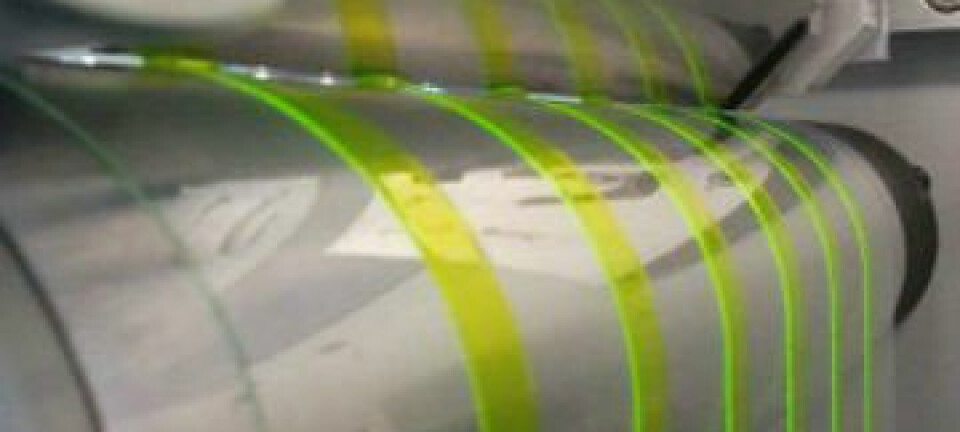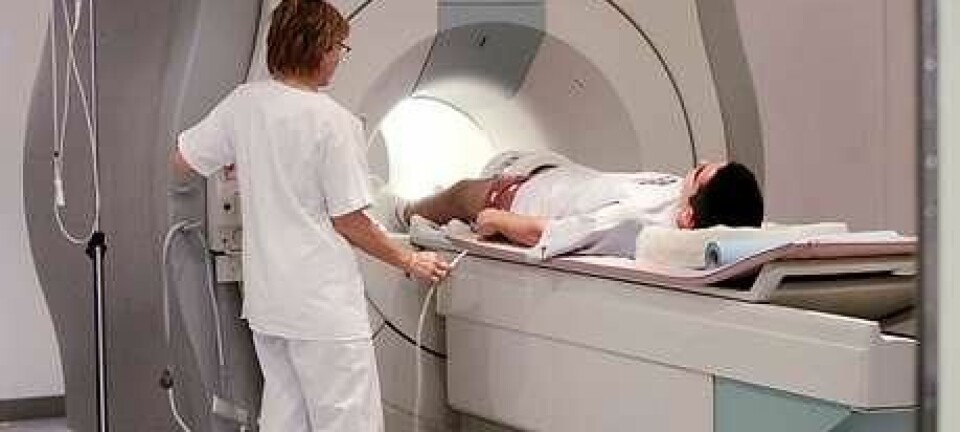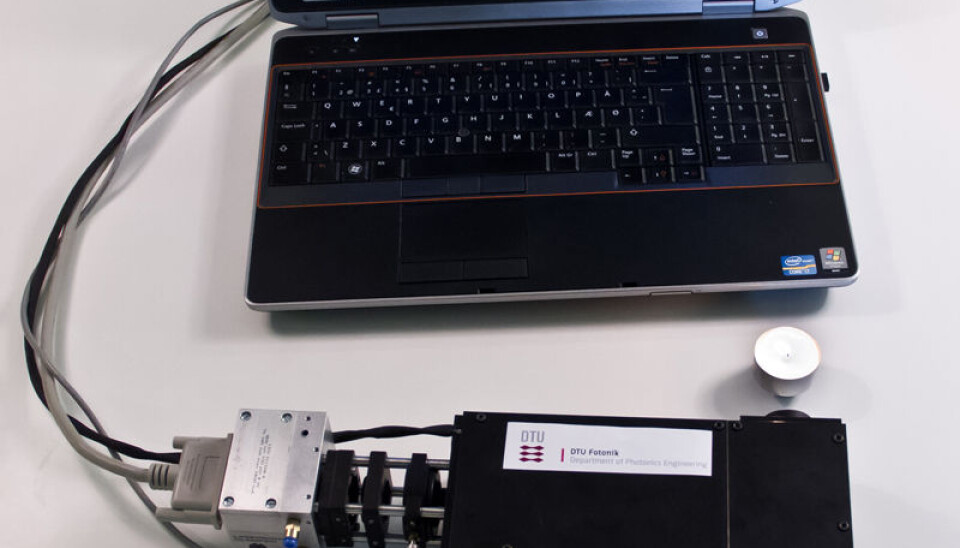
New camera detects chemicals
Soon it may be possible to diagnose diseases, measure pollution and analyse food – with a camera.
Imagine if you could just breathe on a little device and it would tell you whether you had asthma or lung cancer. If only you could point a camera to a fish to find out if it’s tainted. Or how about photographing the smoke from a chimney or an exhaust pipe and immediately be able to identify which pollutants are being emitted?
All this could become possible thanks to an invention by three scientists from the Department of Photonics Engineering at the Technical University of Denmark (DTU).
They have invented an extremely sensitive and compact camera accessory, which can capture radiation in the mid-infrared region, and can be used to identify a wide range of chemicals from a distance.
The device operates by detecting the characteristic spectral fingerprints emitted by chemical substances.
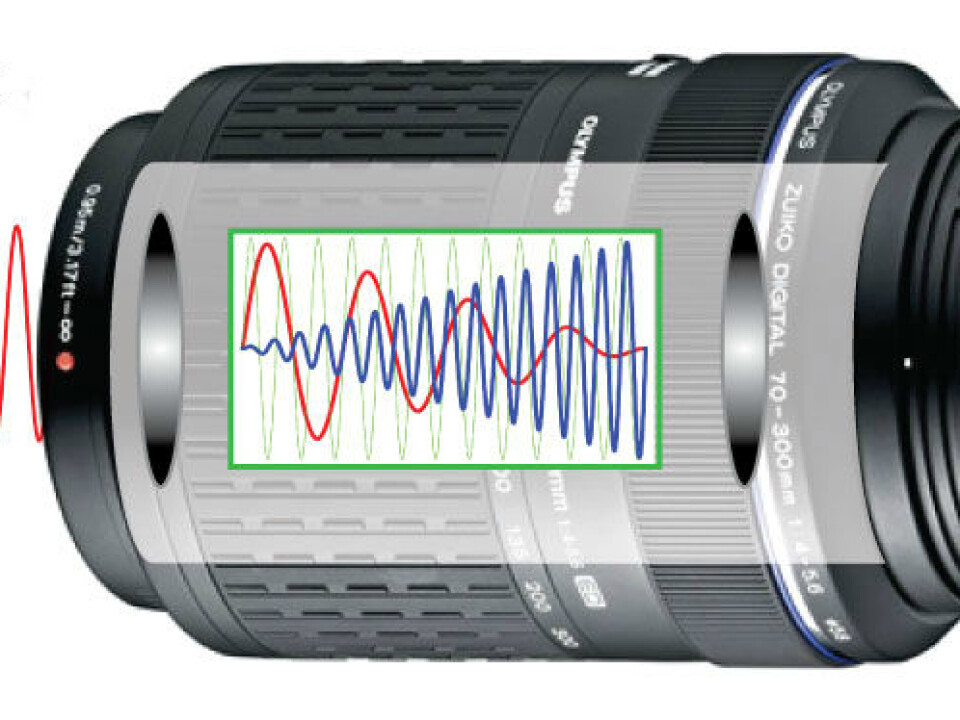
“The mid-infrared wavelengths, in particular, contain a lot of valuable information about the chemical you’re looking at,” says one of the inventors, Associate Professor Peter Tidemand-Lichtenberg.
Exhaled air can hold signs of cancer
The new technology has a wide variety of possible uses:
“It could for instance be used in food analysis and in monitoring exhaust gases, and also in breath analysis, where you look for tiny concentrations of specific molecules in the exhaled air,” he says.
The human breath contains more than 1,000 different molecules, some of which are caused by illness. If the exhaled air contains high amounts of ethane, it could be a sign of asthma.
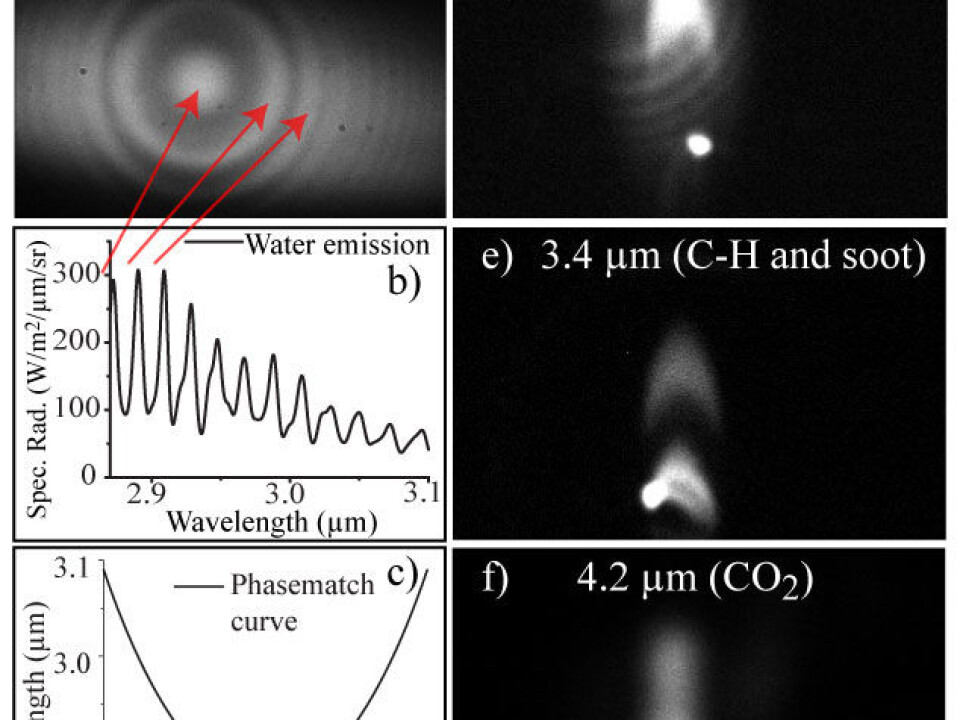
And if, using this technology, doctors detect the 1-butanol and the 3-hydroxy-2-butanone compounds in the breath, the patient may be suffering from lung cancer.
“We can also look for solids and liquids as well as biological material,” says another of the inventors, Jeppe Dam, who uses cancer diagnosis as an example of the range of the new device. This is possible because disease-induced cellular changes in tissue also create identifiable chemical fingerprints.
Tidemand-Lichtenberg agrees that in the future this technology can be used in this way:
“In surgery, our camera can for instance be used to find out whether the whole tumour has been removed or whether some of it is still there.”
Greenhouse gases light up
The mid-infrared wavelengths, in particular, contain a lot of valuable information about the chemical you’re looking at
Gas molecules vibrate in very specific ways. When they do, they absorb or emit an infrared light corresponding to the vibrational mode of the individual molecule.
Measuring this light makes it possible to identify the type of gas.
The camera can not only measure the radiation from the molecules, it can also reveal when the molecules absorb the radiation, explains Dam.
”If we for instance we point our camera at the Sun, we can see what greenhouse gases are in the atmosphere. We then look at which wavelengths from the Sun’s heat radiation fail to penetrate the atmosphere and are therefore missing from the picture.”
In surgery, our camera can for instance be used to find out whether the whole tumour has been removed or whether some of it is still there.
The camera can detect tiny concentrations of greenhouse gases such as carbon dioxide, carbon monoxide, methane and nitrous oxide. In principle, the camera can also be pointed at other stars and their orbiting planets. This makes it possible to see what the atmosphere around these planets is made out of.
Smaller, better and cheaper
There are already cameras that can capture these interesting mid-infrared wavelengths, but the DTU researchers say they have found a way of producing highly efficient cameras in a much smarter way than with existing cameras.
“Whereas the existing technology uses big and heavy cameras that need to be cooled down to minus a couple of hundred degrees to provide a good signal, ours does a much better job even when it’s not cooled down at all,” says Dam.
“It’s relatively compact and portable, and it can run on batteries since it uses very little power. And it’s ready to use as soon as you switch it on.”
The lens makes all the difference
The new invention is not actually a camera; rather, it’s a device that can be placed in front of the image sensor in a standard digital camera, which otherwise would only detect light in the visible and near-infrared regions.
“It can be compared to a lens in an SLR camera,” says Dam.
“In the device, we alter the wavelength of the incoming light, so that we can capture the infrared light. We simply convert the light as it passes through our ‘lens’.”
The device converts mid-infrared radiation with wavelengths ranging from 2.85 to 5 micrometres to light with a wavelength of around 0.8 micrometres. This light is easy for the sensor in a standard camera to detect.
Energy from laser light
Technically speaking, the device works by the mid-infrared radiation being blended with light from a laser beam in a special crystal. Each infrared photon (light particle) gets an extra shot of energy from a laser photon, and the result is a photon that can be registered by the image sensor in a standard digital camera.
“This technology has actually been around since the 1960s, but around 1980 scientists gave up because at that time it was only possible to convert one out of five million photons,” says Tidemand-Lightenberg.
”Our breakthrough is that we have increased the efficiency to a point where we can now convert one out of five photons."
Jeppe Dam adds: “On average, we take every fifth infrared photon and add the energy from a laser photon. We’re a million times better than our closest competitors.”
And this is probably why the prestigious scientific journal Nature Photonics has published the researchers’ article about the new technology.
More work required
The researchers have now demonstrated that it’s possible to develop an extremely sensitive and compact mid-infrared camera that can be used for detecting a variety of interesting molecules.
The next obvious question is, when can we get our hands on this little wonder?
“The project is still at a relatively early stage,” says Tidemand-Lichtenberg. “There’s a wide variety of different uses, and now we’ll start targeting our technology to specific application. That requires a bit more engineering work.”
---------------------------------------
Read the Danish version of this article at videnskab.dk
Translated by: Dann Vinther
